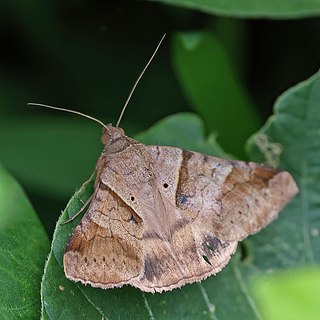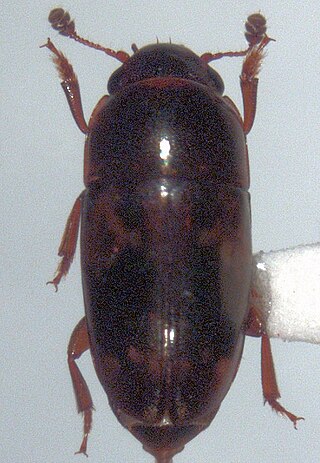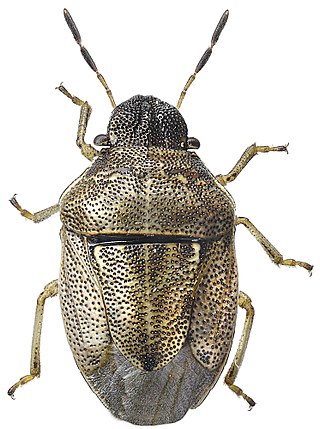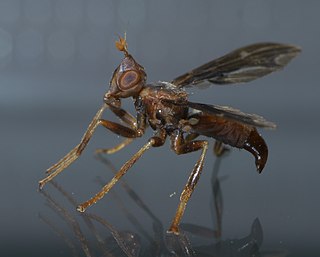
The Dartford warbler is a typical warbler from the warmer parts of western Europe and northwestern Africa. It is a small warbler with a long thin tail and a thin pointed bill. The adult male has grey-brown upperparts and is dull reddish-brown below except for the centre of the belly which has a dirty white patch. It has light speckles on the throat and a red eye-ring. The sexes are similar but the adult female is usually less grey above and paler below.

Pentatomidae is a family of insects belonging to the order Hemiptera, generally called shield bugs or stink bugs. Pentatomidae is the largest family in the superfamily Pentatomoidea, and contains around 900 genera and over 4700 species. As hemipterans, the pentatomids have piercing sucking mouthparts, and most are phytophagous, including several species which are severe pests on agricultural crops. However, some species, particularly in the subfamily Asopinae, are predatory and may be considered beneficial.
The United Nations Statistics Division (UNSD), formerly the United Nations Statistical Office, serves under the United Nations Department of Economic and Social Affairs (DESA) as the central mechanism within the Secretariat of the United Nations to supply the statistical needs and coordinating activities of the global statistical system. The Division is overseen by the United Nations Statistical Commission, established in 1947, as the apex entity of the global statistical system and highest decision making body for coordinating international statistical activities. It brings together the Chief Statisticians from member states from around the world.

Mocis undata, the brown-striped semilooper, is a moth of the family Erebidae. The species was first described by Johan Christian Fabricius in 1775. It is found in the Afrotropical and Oriental regions, including India and Sri Lanka.

Pyrausta tyralis, the coffee-loving pyrausta moth, is a species of moth in the family Crambidae. It was described by Achille Guenée in 1854. It is found in the United States, where it has been recorded from New York to Illinois and from Florida to Arizona. It is also found from Mexico to Venezuela, as well as on the West Indies.

Cryptarcha is a genus of sap beetles, insects in the family Nitidulidae.
Neottiglossa sulcifrons is a species of stink bug in the family Pentatomidae. It is found in North America.

Neottiglossa is a genus of stink bugs in the family Pentatomidae. There are about 10 described species in Neottiglossa.
Prothalpia is a genus of false darkling beetles in the family Melandryidae. There are at least four described species in Prothalpia.
Neottiglossa tumidifrons is a species of stink bug in the family Pentatomidae. It is found in North America.
Neottiglossa trilineata is a species of stink bug in the family Pentatomidae. It is found in North America.

Psallus is a genus of plant bugs in the family Miridae. There are more than 170 described species in Psallus.
Mixogaster breviventris is a species of syrphid fly in the family Syrphidae.
Chrysotoxum chinook is a species of syrphid fly in the family Syrphidae.
Aradus funestus is a species of flat bug in the family Aradidae. It is found in North America.
Pilophorus tibialis is a species of plant bug in the family Miridae. It is found in Central America and North America.
Aradus depictus is a species of flat bug in the family Aradidae. It is found in North America.

Pyrgota is a genus of flies in the family Pyrgotidae. There are about 10 described species in Pyrgota.

Pyrgota undata, the waved light fly, is a species of fly in the family Pyrgotidae.
Pedioplanis undata, known commonly as the plain sand lizard or the western sand lizard, is a species of lizard in the family Lacertidae. The species is endemic to Southern Africa.







